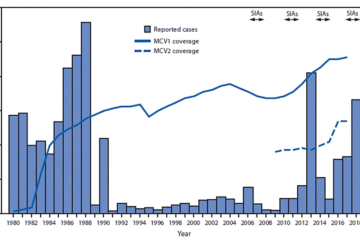Paving the Way to Education and Opportunity in Pakistan – Pakistan – ReliefWeb

HIGHLIGHTS
The World Bank is helping upgrade some 650 kilometers of rural roads in Khyber Pakhtunkhwa, a mountainous province in northwestern Pakistan
The project will boost development across the province by providing a reliable year-round accessibility to schools, healthcare centers, markets, and other key opportunities
The project team conducted extensive data analysis to identify accessibility gaps combined with field work to identify the major transport barriers that deters access to education for girls and its development benefits
Bitumen. Asphalt. Concrete. Gravel. These are the components of a road, but they aren’t the parts that matter for the people who use them. What matters is access to schools, health care services, and markets. In Pakistan’s Khyber Pakhtunkhwa Province, or KP for short, safe roads can mean for girls the difference between going to school or staying home, between seeing a healthcare provider or getting sicker, between selling wheat or vegetables for a healthy profit at market or selling too cheaply to neighbors.
Accessibility is the premise behind the World Bank’s Khyber Pakhtunkhwa Rural Accessibility Project, or KPRAP, which aims to better link 1.7 million people in a remote, mountainous region of Pakistan to the services and opportunities in towns and cities nearby. Specifically, the $300-million program will finance the upgrading of 45 road sections with a total length of approximately 650kilometers.
“In KP, all-weather rural roads play a key role in accessibility to basic services and connecting districts to provincial centers, but almost 41 percent of the road network is in poor condition and almost 20 percent is not paved,” said Lincoln Flor, one of the Word Bank Senior Transport Specialists supervising the project. “By providing better and more reliable road access, the KPRAP project will make a significant difference in the daily lives of residents, especially for girls in the poorest and most remote parts of KP.”
One major focus of the project is getting girls and boys to school. The project’s new and improved roads will benefit 65,000 girls in five districts, allowing them to get to school faster, on better and safer roads. Long home-to-school commutes and difficult road conditions disproportionately keep girls out of the classroom. In some districts in KP, more than 70 percent of girls are out of school, as compared to 30 percent of boys. Pakistan Communication and Works Department of KP data shows that for nearly half of the province’s rural population, school is far– more than a 30-minute drive away. Ten percent of people in KP live more than a two-hour drive from an urban center.
Getting girls to school is a priority in Pakistan, which has the second largest out-of-school population of any country. Nearly 23 million Pakistani children aged 5 to 16 do not attend school. Aside from teacher shortages, distance to school and safety are the largest barriers to accessing education in rural areas, with 29 percent of parents saying that schools are simply too far away. Girls are twice as likely to skip school in rural areas as compared to their urban peers, from 43 percent in the countryside versus 21 percent in cities and towns. This gap is even more pronounced in middle and higher education.
Better access to education is just one of many potential benefits. “The team worked closely with the government to carry out a comprehensive geospatial analysis which identified locations with the lowest accessibility and highest gender disparities,” said Hasan Afzal Zaidi, a World Bank Senior Transport Specialist who is co-leading the project. “Our analysis showed that Districts in North, South and in erstwhile FATA in KP were the locations where improved rural access could have the biggest impact.”
Many factors play a role in improving accessibility, of course. Compared to the rest of Pakistan, KP is especially vulnerable to climate change because of its terrain and topography, so building roads with climate resilience is a key part of the project. In winter, snow and ice block roads, while during the monsoon season travelers face the risk of floods and landslides. More resilient roads will help local communities navigate these conditions and will provide all-weather access to crucial services, like schools, health care, and markets. When disaster strikes, resilient roads will also ensure continued access for emergency services and will reduce reconstruction costs.
Geospatial analysis by the WB team showed that almost 40 percent of the rural population in KP has to travel more than an hour to get to a health center. Barriers like travel time and distance are linked to higher numbers of deaths and disease from conditions that are treatable. Household data shows that lack of transport and long distances deter people, especially women of childbearing age, from getting the care they need.
Providing farmers and merchants with better access to markets is also an important part of the project. Eighty five percent of KP’s population relies on agriculture for their livelihoods, and bad roads, which make for time-consuming and expensive transport, hurt small farmers. This, combined with lack of adequate storage, can lead to expensive postharvest losses for farmers.
This focus on KP is part of an overall WB push to use data to better inform its investment decisions, like locations for new schools and transport upgrades. It builds on earlier, and similar, accessibility projects in Afghanistan, Nepal, Sri Lanka, Bhutan, and Bangladesh. For both the World Bank and for governments around the globe, accessibility analyses like those used in KP are fast becoming core inputs into transport infrastructure planning and policies.











